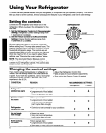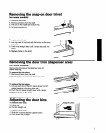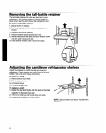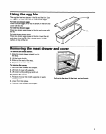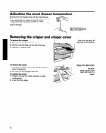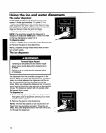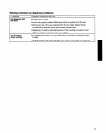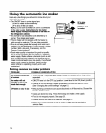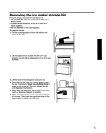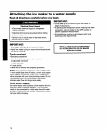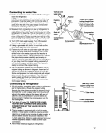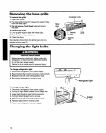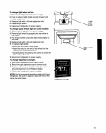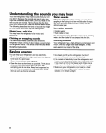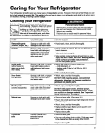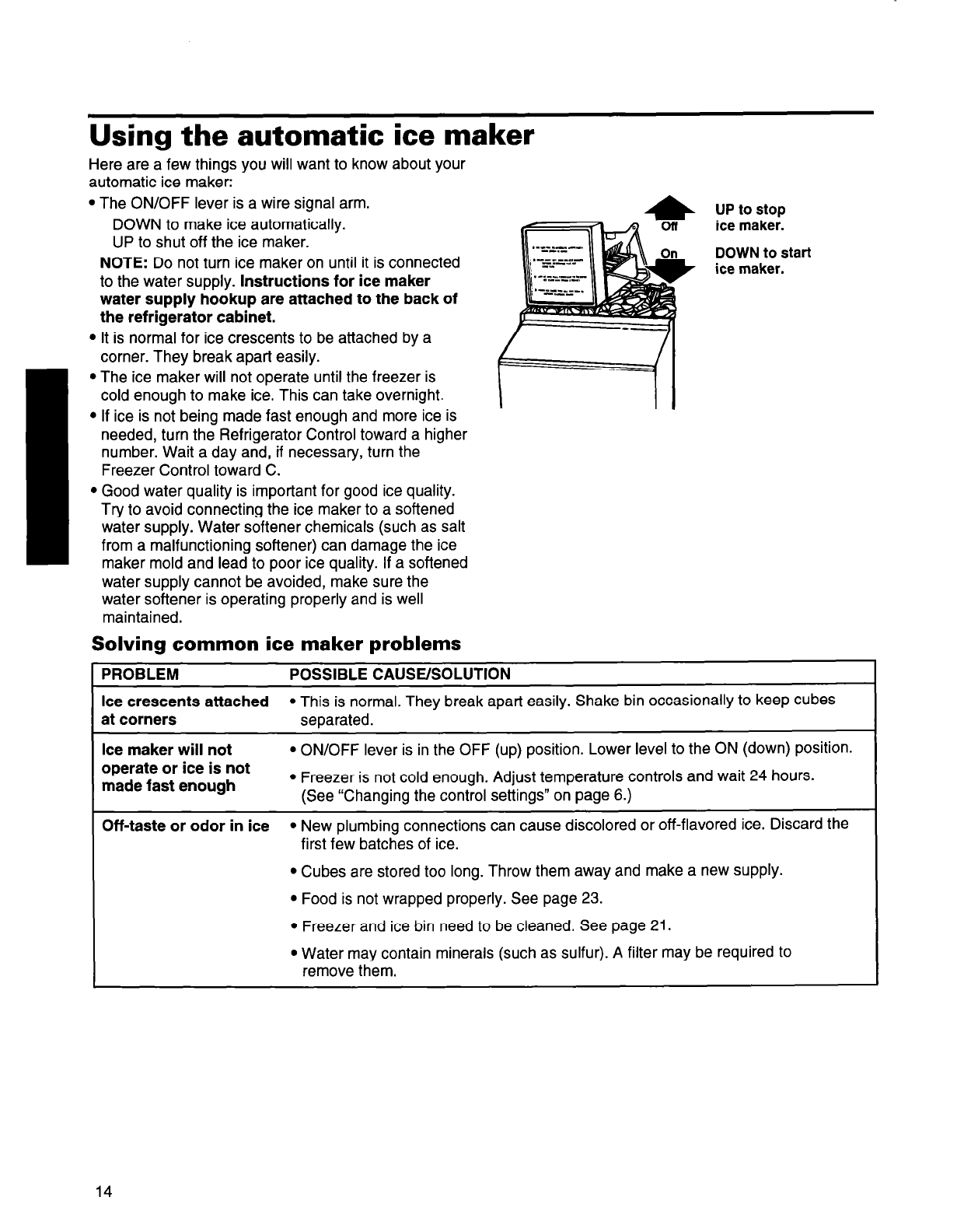
Using the automatic ice maker
Here are a few things you will want to know about your
automatic ice maker:
l The ON/OFF lever is a wire signal arm.
DOWN to make ice automatically.
UP to shut off the ice maker.
NOTE:
Do not turn ice maker on until it is connected
to the water supply.
Instructions for ice maker
water supply hookup are attached to the back of
the refrigerator cabinet.
l It is normal for ice crescents to be attached by a
corner. They break apart easily.
l The ice maker will not operate until the freezer is
cold enough to make ice. This can take overnight.
l If ice is not being made fast enough and more ice is
needed, turn the Refrigerator Control toward a higher
number. Wait a day and, if necessary, turn the
Freezer Control toward C.
l Good water quality is important for good ice quality.
Try to avoid connecting the ice maker to a softened
water supply. Water softener chemicals (such as salt
from a malfunctioning softener) can damage the ice
maker mold and lead to poor ice quality. If a softened
water supply cannot be avoided, make sure the
water softener is operating properly and is well
maintained.
Solving common ice maker problems
. UP to stop
ice make;.
DOWN to start
ice maker.
PROBLEM POSSIBLE CAUSE/SOLUTION
Ice crescents attached
l This is normal. They break apart easily. Shake bin occasionally to keep cubes
at corners
separated.
Ice maker will not
l ON/OFF lever is in the OFF (up) position. Lower level to the ON (down) position.
operate or ice is not
made fast enough
l Freezer is not cold enough. Adjust temperature controls and wait 24 hours.
(See “Changing the control settings” on page 6.)
Off-taste
or odor in ice l New plumbing connections can cause discolored or off-flavored ice. Discard the
first few batches of ice.
l Cubes are stored too long. Throw them away and make a new supply.
l Food is not wrapped properly. See page 23.
l Freezer and ice bin need to be cleaned. See page 21.
l Water may contain minerals (such as sulfur). A filter may be required to
remove them.
14



